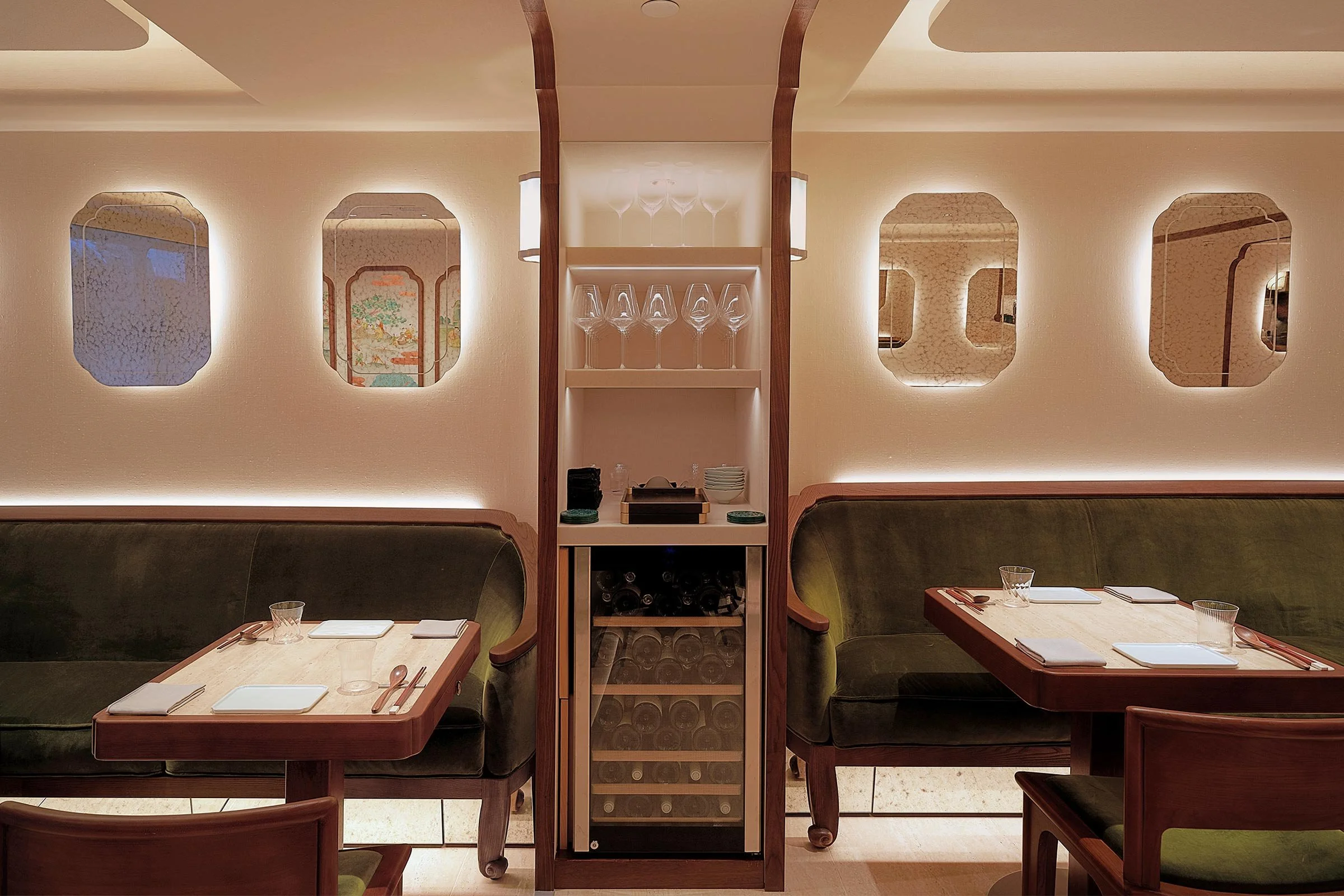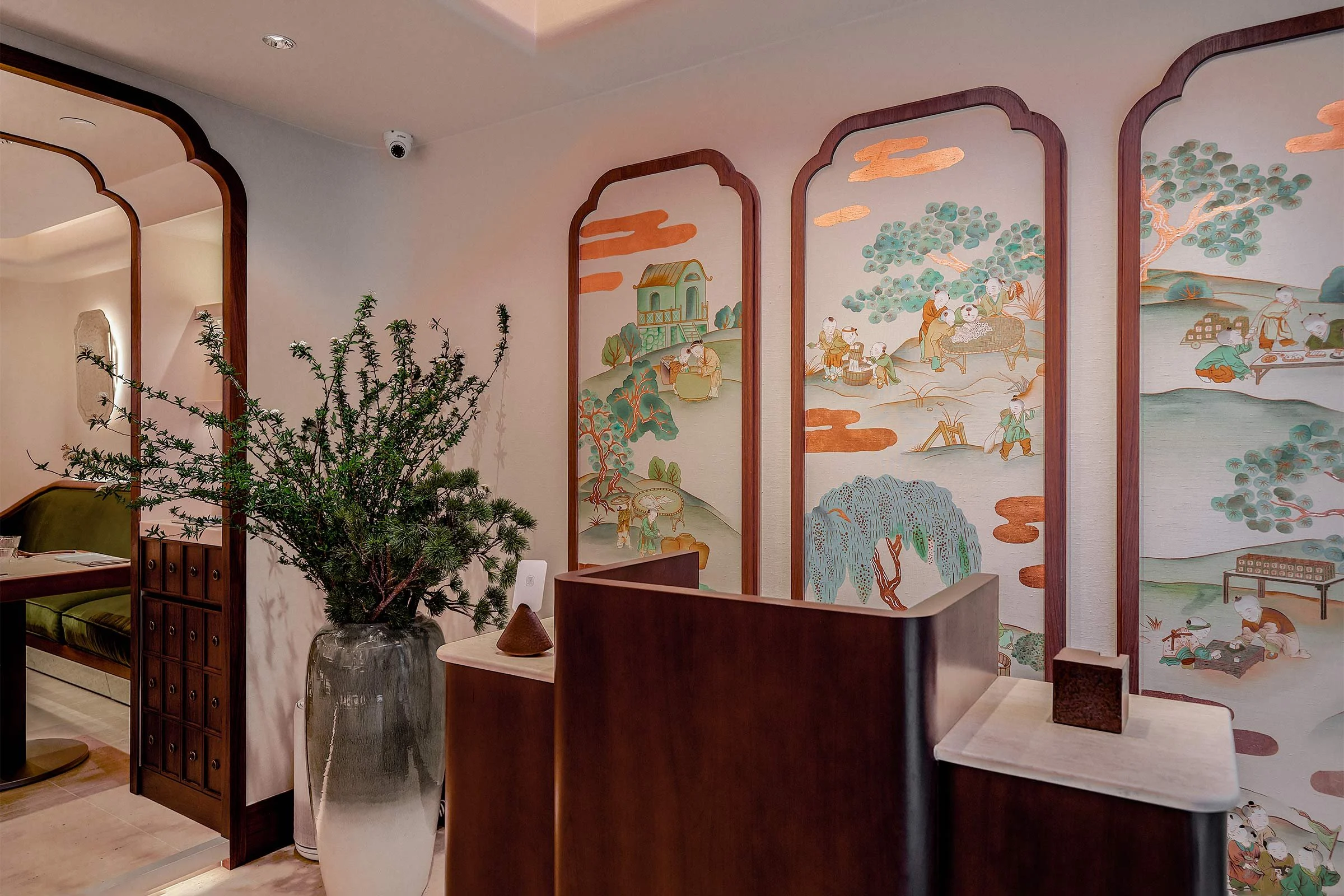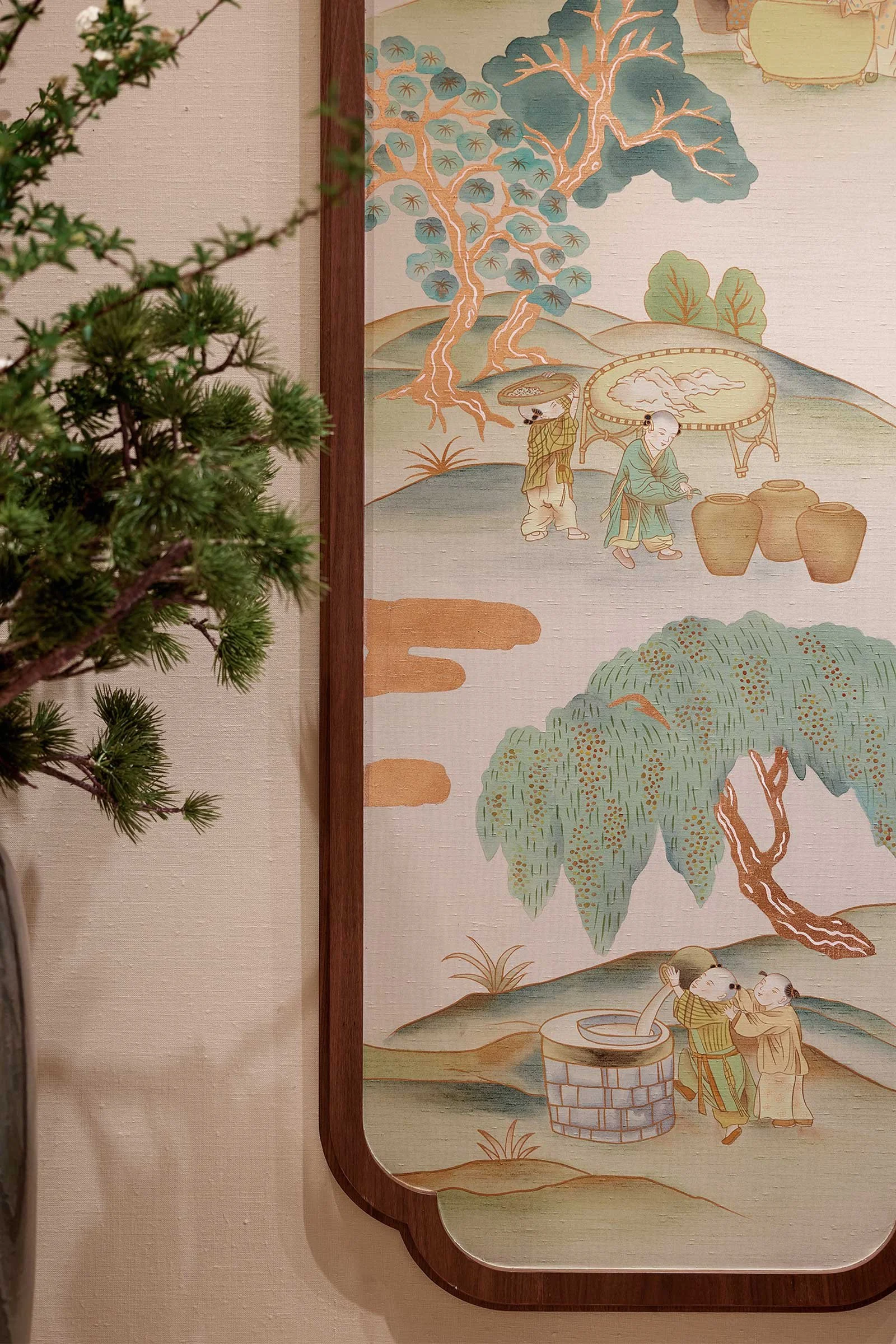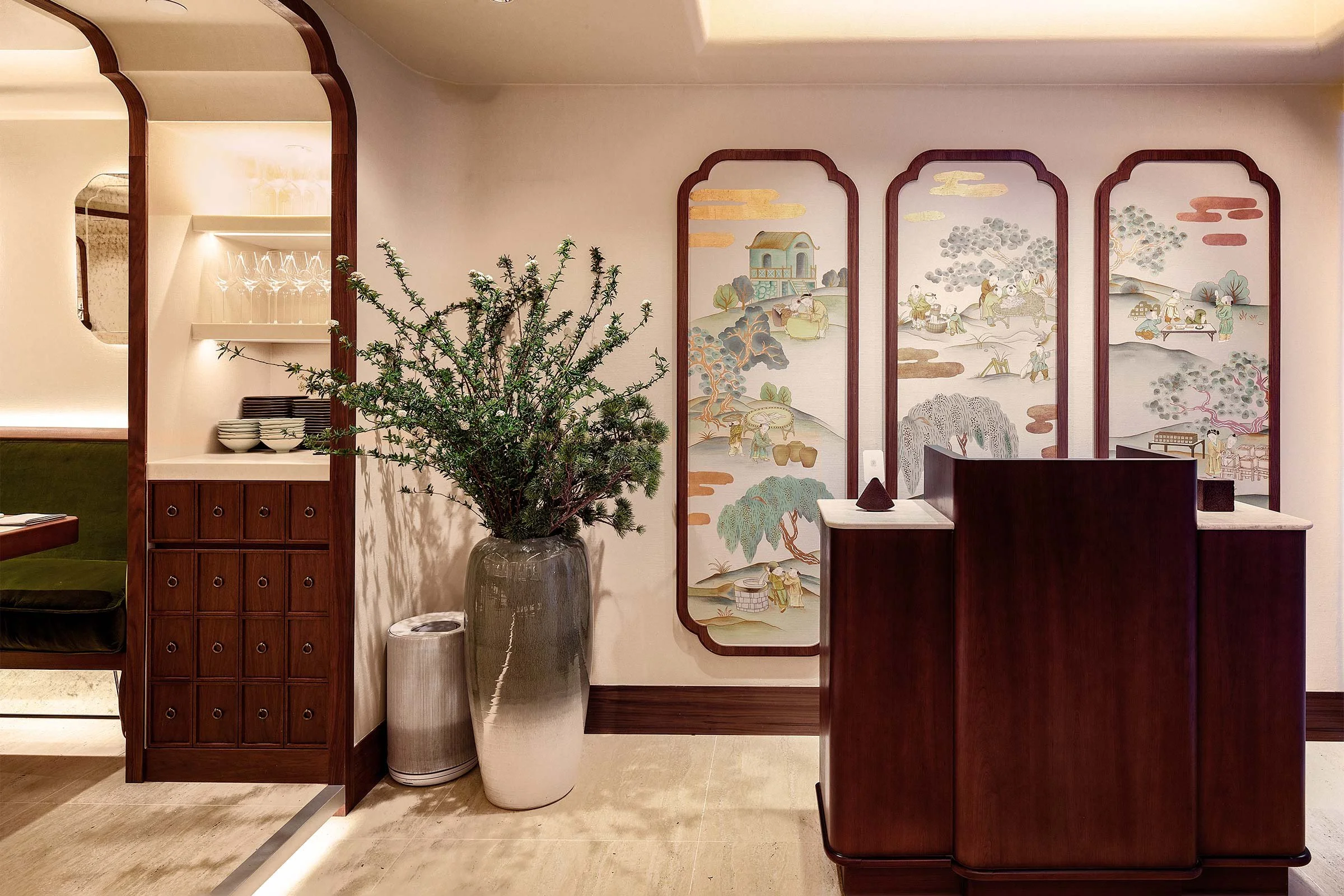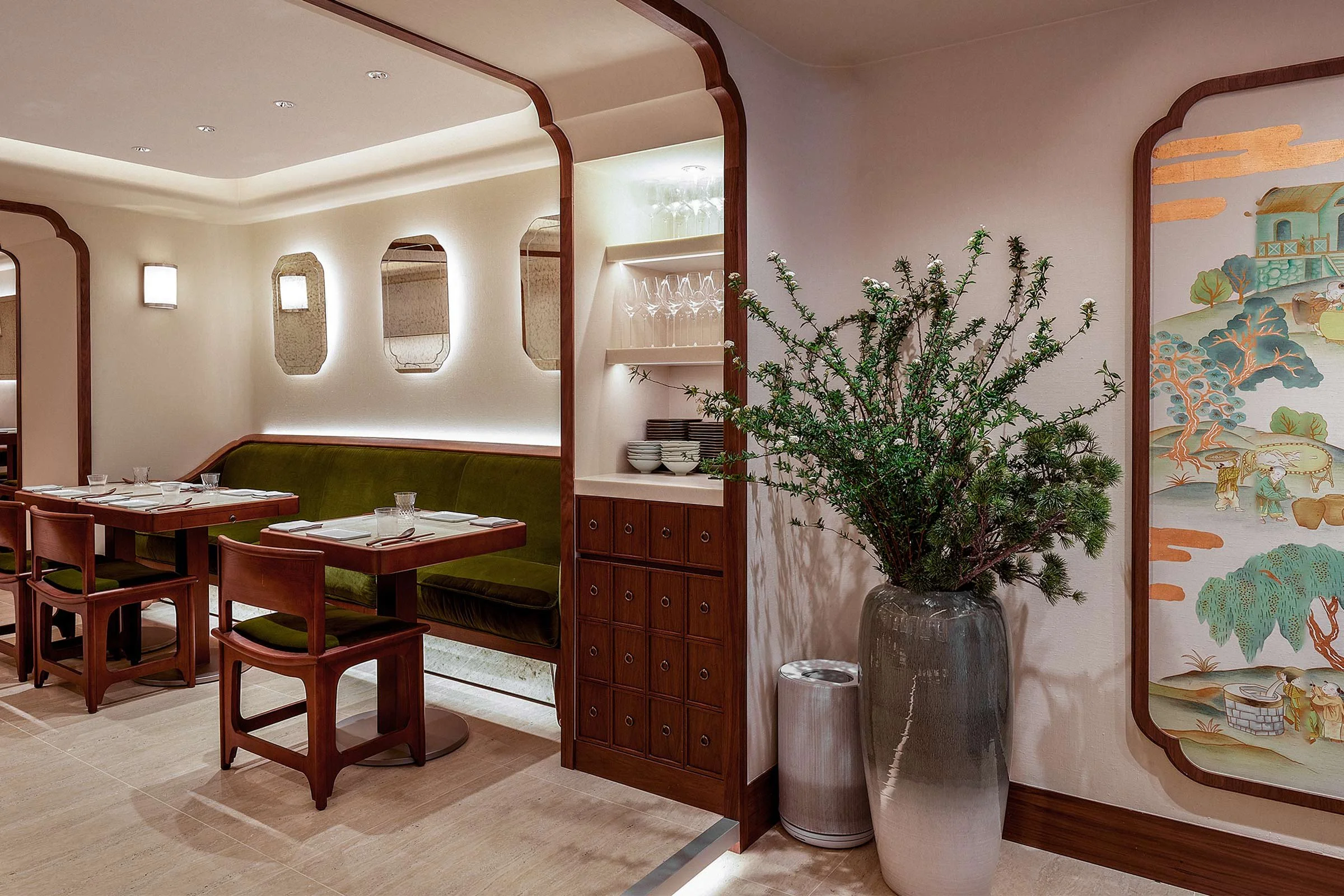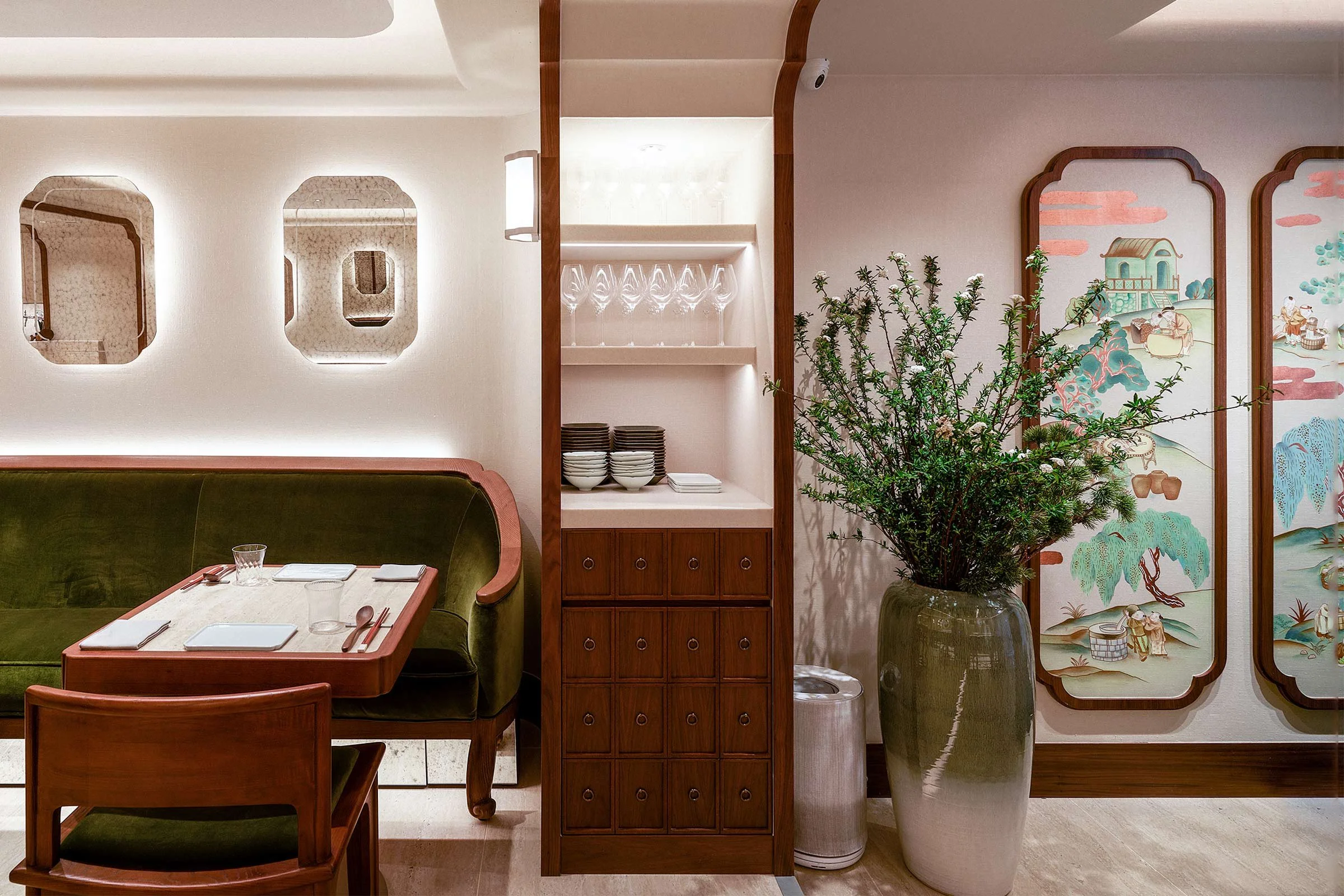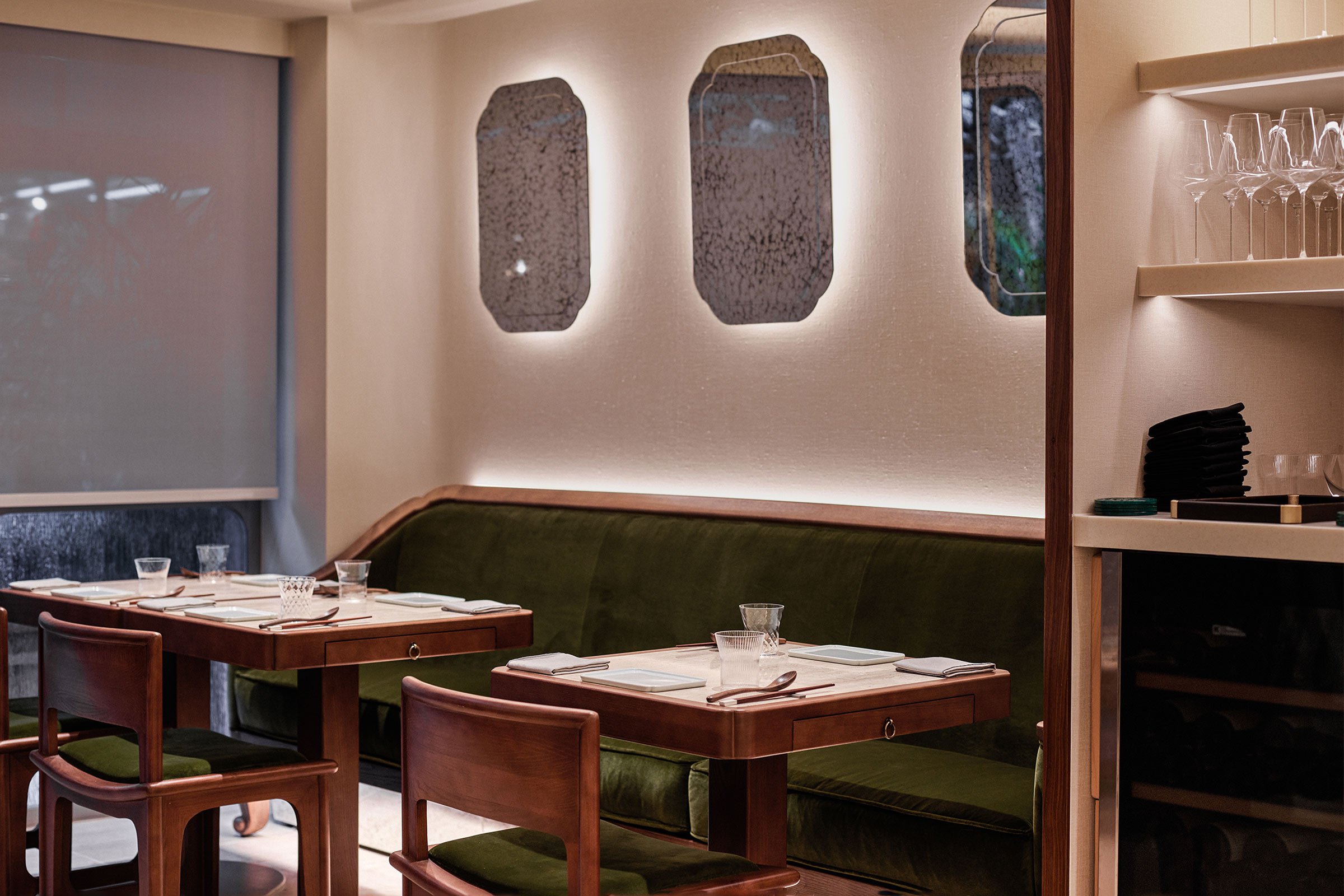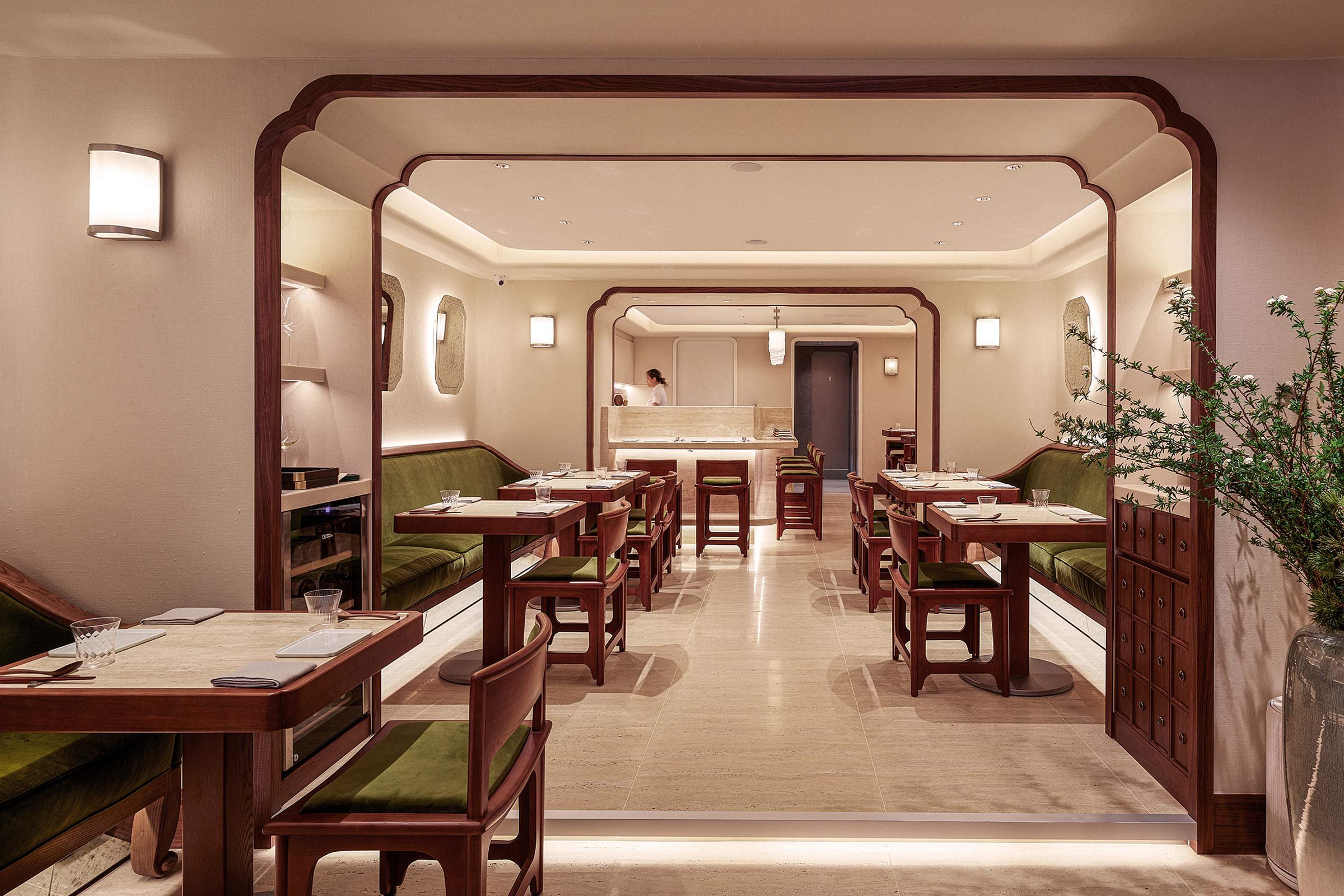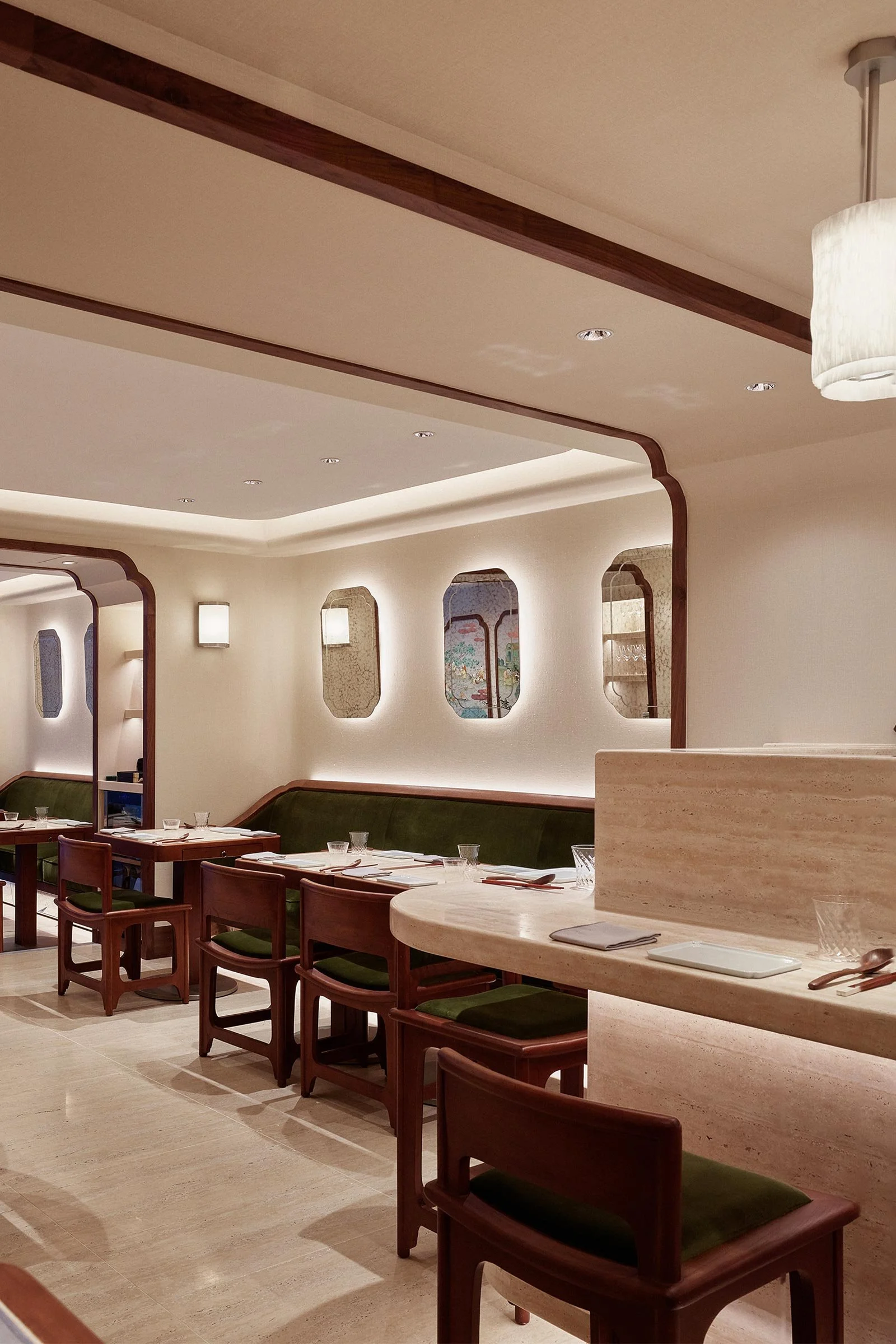Mora is an Ode to Soy
Chef Vicky Lau’s new restaurant Mora celebrates soy in all its shapes and forms — an homage to her culinary roots that designer Sean Dix has translated into the new Hong Kong space
Hidden on a narrow alley lined with antique stalls just steps away from one of Hong Kong’s oldest temples, Mora blends into its environment as though it’s always been part of the street. Earlier this year, Vicky Lau — the head chef of two-Michelin-star restaurant Tate Dining Room — opened her second restaurant in Sheung Wan. Adjacent to the city’s financial centre, the area once accommodated Indian infantrymen during the British rule — a piece of history the restaurant’s name is derived from. ‘The idea was really to connect with the neighbourhood and its history,’ says Hong Kong-based interior architect and designer Sean Dix. ‘Many elements of the decor are inspired by the streetscape.’
Combining Chinese and Western elements, Mora’s contemporary design subtly reflects the context of the neighbourhood and Lau’s Chinese and French culinary background. On beige travertine floors stand travertine-topped walnut dining tables and modern interpretations of a typical Ming dynasty chair. Wooden wall arches divide the restaurant into three sections and elegantly frame the space, evoking a traditional Chinese garden. At the entrance, a wooden reception counter inspired by a Shanghai Art Deco wardrobe welcomes guests, while behind, a bespoke triptych by LALA CURIO depicts the history of tofu in a traditional Chinese painting style. Quiet details like the sofa’s curled feet add a European touch to the space.
The design honours the cultural intersection inherent to Lau’s cuisine, and also celebrates the core ingredient of Mora’s menu: tofu. Produced in endless shapes and forms, the soft, white curd made from coagulated soy milk inspired the restaurant’s textures, colours and atmosphere. Off-white linen wallpaper enrobes the entire space like a soft, protective cocoon, recalling the cloth traditionally used to mould blocks of tofu. Covering the tabletops and floors, the travertine further echoes the spongy appearance of the soy-based specialty. ‘When Vicky told me about the concept of the restaurant, I immediately knew that I wanted to work with travertine,’ Dix says. ‘Instead of concealing the stone’s holes and asperities with stucco, we filled them with a translucent resin to highlight its natural porosity and evoke the texture of tofu.’
Anchoring the space, a commanding travertine dining counter wraps around the open kitchen. Hanging above, 3D-printed lamps shaped in delicate rolls mimic the fragile, ruffled texture of tofu skin. Contrasting with the cool tone and texture of the travertine, plush jade-green upholstery on the sofas and chairs bring some warmth and cosiness to the space. ‘What I love about the design is that everything ties together and balances each other out seamlessly,’ says Dix. ‘Everything is about tactility and how to make people feel comfortable.’
While the space is softened by round edges throughout, lighting and acoustics were also utilised to create a cushioned, soothing atmosphere. Upholstered sofas, acoustic panels and the ceiling were designed to absorb as much sound as possible, while accent lighting behind sofas and mirrors creates a cinematographic ambience. Mirrors on the walls make the intimate space feel bigger while creating a subtle play of light. ‘Mora was also designed to reflect Vicky’s calm, understated character,’ Dix says.
Here and there, fresh flowers pour out of Chinese antique vases, bringing some freshness and a sense of serenity. On the tables, delicate glassware complements Lau’s refined cuisine. More than an ode to tofu, Mora is a love letter to the creative melding of cultures — both in design and in the plate.
Text / Nina Milhaud


